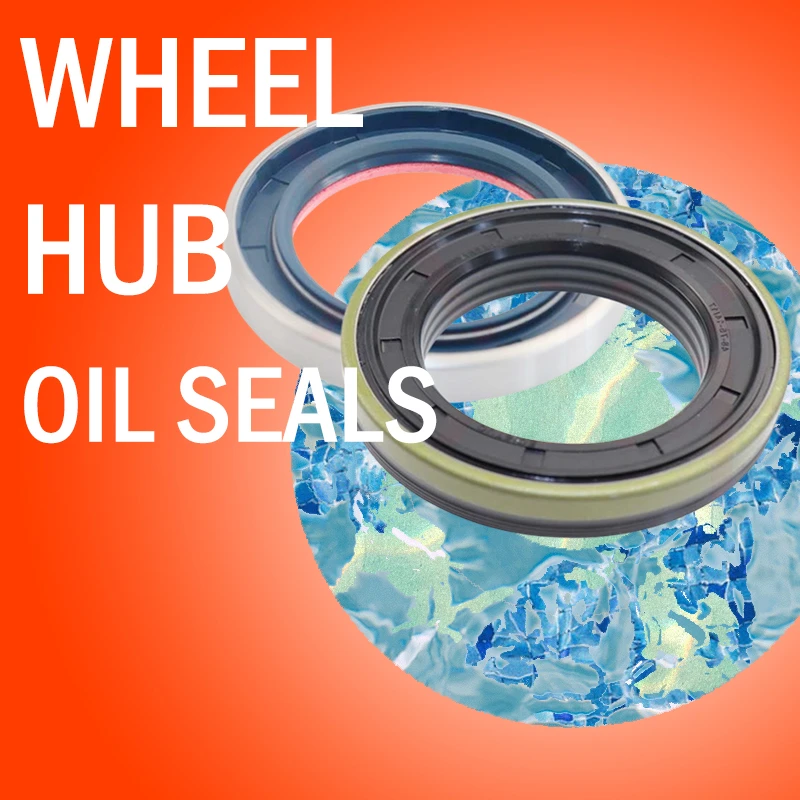Nov . 08, 2024 13:48 Back to list
Wheel Hub Oil Seal Replacement and Maintenance Guide for Optimal Performance
Understanding Wheel Hub Oil Seals Importance and Functionality
Wheel hub oil seals play a vital role in the overall performance and durability of a vehicle's wheel assembly. Positioned within the wheel hub, these seals are essential components designed to prevent the leakage of lubricating oil, as well as to keep dirt, debris, and moisture from entering the inner workings of the wheel hub. This article delves into the significance, functionality, and maintenance of wheel hub oil seals.
The Importance of Wheel Hub Oil Seals
When it comes to vehicle maintenance, many car owners often overlook the wheel hub oil seal, viewing it as a mere accessory. However, understanding its importance is critical. The primary function of the oil seal is to retain the wheel hub grease, which lubricates the bearings. Proper lubrication is vital in reducing friction and wear between moving parts, ultimately extending the lifespan of the wheel assembly and enhancing the vehicle's performance.
Additionally, the oil seal protects against contaminants such as dirt, moisture, and salt, which can lead to corrosion and damage to the wheel bearings and axle. Contaminants may infiltrate through any gaps in the hub assembly, making the oil seal a frontline defense for the integrity and functionality of the wheel hub.
The Functionality of Wheel Hub Oil Seals
Wheel hub oil seals come in various shapes and sizes, designed to fit specific vehicles and applications. Generally made from rubber or synthetic materials, these seals are engineered to withstand extreme temperatures and pressures associated with vehicle operation. The seals feature a lip that grips the shaft tightly to create a barrier against oil leakage and environmental intrusion.
When the wheel turns, the rotation can create significant centrifugal forces. The oil seal must maintain its position and integrity under these conditions to prevent any loss of lubrication. A well-functioning oil seal ensures that the grease remains where it is needed, thus maintaining optimal lubrication and cooling of the wheel bearings.
Most modern vehicles use a sealed hub bearing design that integrates the oil seal into the assembly, making it less susceptible to dirt and moisture. Yet, older vehicles and certain specialized applications still utilize separate oil seals, making proper installation and maintenance crucial.
Signs of a Failing Wheel Hub Oil Seal
wheel hub oil seal

Recognizing the signs of a failing oil seal can prevent more extensive damage to the wheel assembly. Some common indicators of a problematic oil seal include
1. Oil Leakage One of the most apparent signs is visible oil pooling or streaking under the wheel hub. If there is a noticeable drop in grease levels within the hub, this could suggest that the oil seal has become compromised.
2. Unusual Noises Grinding, whining, or excessive noise from the wheel area can indicate worn wheel bearings, potentially exacerbated by a failing seal. As the lubrication diminishes, the bearings suffer increased friction, leading to noise.
3. Vibration Increased vibration during acceleration or normal driving can signal a failing wheel hub assembly, often linked to oil seal failure.
4. Corrosion or Rust If you observe corrosion or rust on the wheel bearings during inspection, this may indicate that moisture has penetrated due to a damaged oil seal.
Maintenance and Replacement
To ensure the longevity of wheel hub oil seals, regular vehicle maintenance is crucial. During routine inspections, mechanics should check for signs of oil leakage and examine the condition of the seals. When replacing tires or performing brake service, it’s a good practice to inspect the oil seals as well.
If a oil seal has failed, replacement is necessary to restore proper function. This process typically involves removing the wheel hub assembly, cleaning the component surfaces, and correctly installing a new oil seal.
Conclusion
Wheel hub oil seals may not be the most glamorous vehicle component, but their importance in maintaining a vehicle's performance cannot be overstated. By preventing oil leaks and protecting against contaminants, they play a crucial role in the longevity and efficiency of the wheel assembly. Regular inspection and maintenance of these seals will ensure that they function correctly, ultimately contributing to smoother drives and safer road experiences. Maintaining vigilant care of wheel hub oil seals is not only wise; it is essential for the overall reliability of your vehicle.
-
Unlocking the Potential of Hydraulic Systems with Essential Sealing Solutions
NewsAug.06,2025
-
Unleash the Power of Your Hydraulic Systems with Our Premium Seal Kits
NewsAug.06,2025
-
Specialized Hydraulic Seal Kits for Breakers, Pistons, and Presses
NewsAug.06,2025
-
Revitalize Hydraulic Systems with Premium Repair and Seal Kits
NewsAug.06,2025
-
Fortify Your Cylinders with Premium Sealing Solutions
NewsAug.06,2025
-
Elevate Hydraulic System Reliability with Specialized Seal Kits
NewsAug.06,2025
-
TCN Oil Seal Metal Ring Reinforcement for Heavy Machinery
NewsJul.25,2025
Products categories
















